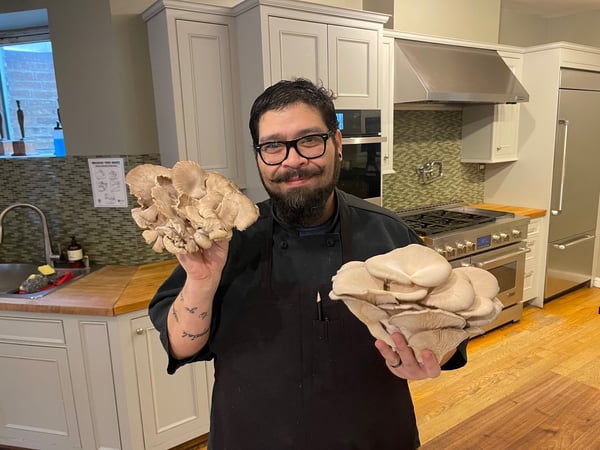How To Clean Mushrooms
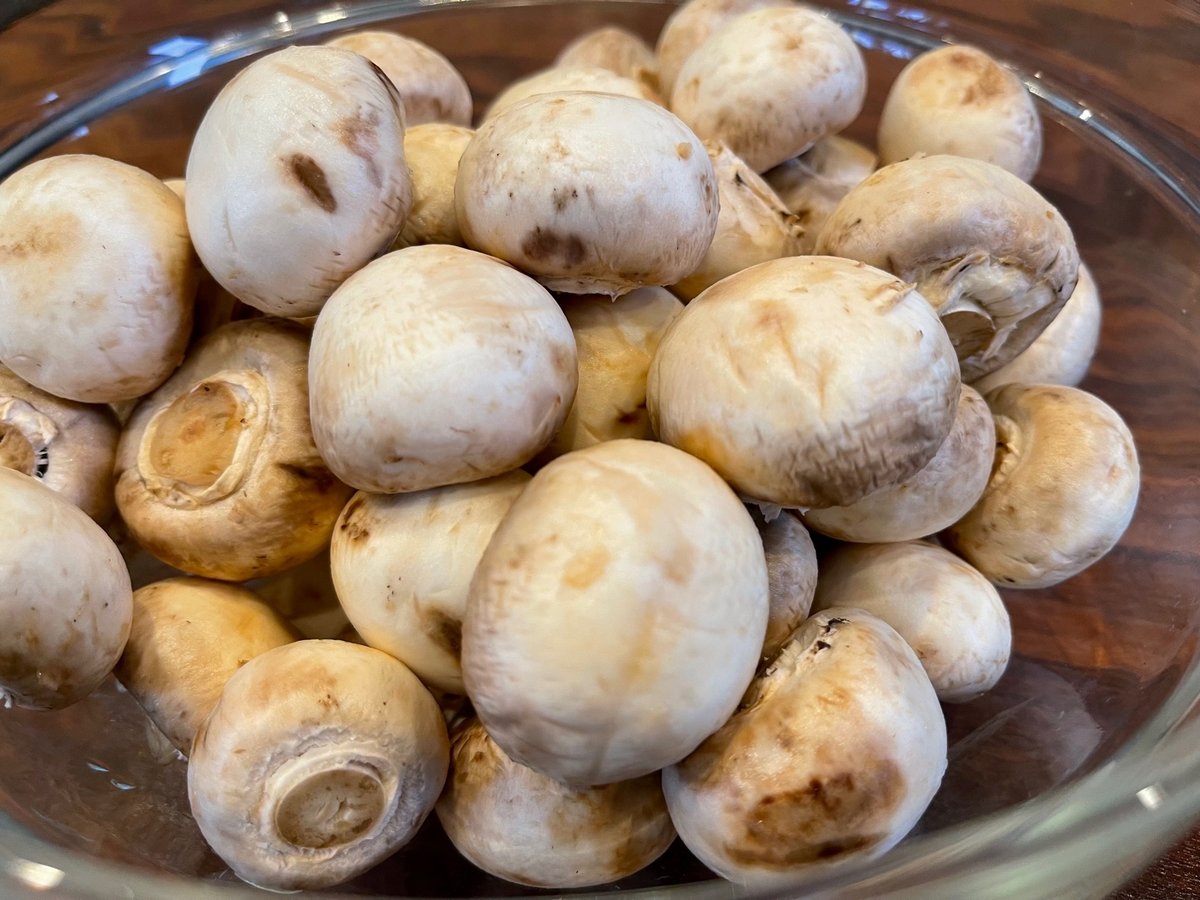
How to clean mushrooms is a common question we get in our cooking classes, and it's one which over the course of my career has become a more complicated one to answer. When I opened The Chopping Block 25+ years ago, I could give a more straightforward response. Today, I find the answer to be a much more complex one.
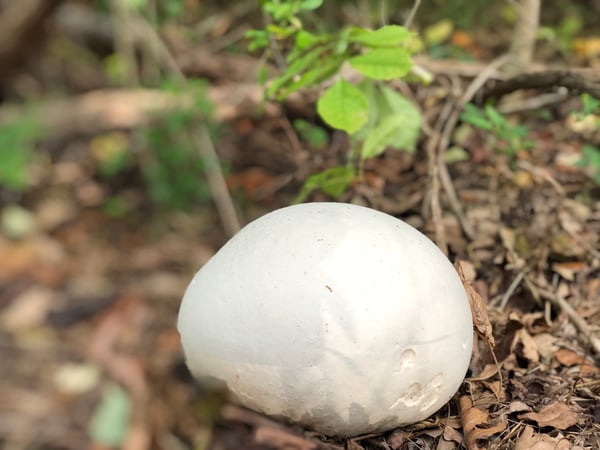 Wild Puffball Mushroom
Wild Puffball Mushroom
When a student asked this question back then, they were primarily talking about button or white mushrooms. Button mushrooms were pretty much all we saw in the average grocery store. Today when you go to the grocery store, there may easily be a half dozen varieties in the produce section. Portobello, cremini, maitake, oyster, enoki are about as common to the shelves of your local grocery store as the staple domestic mushroom.
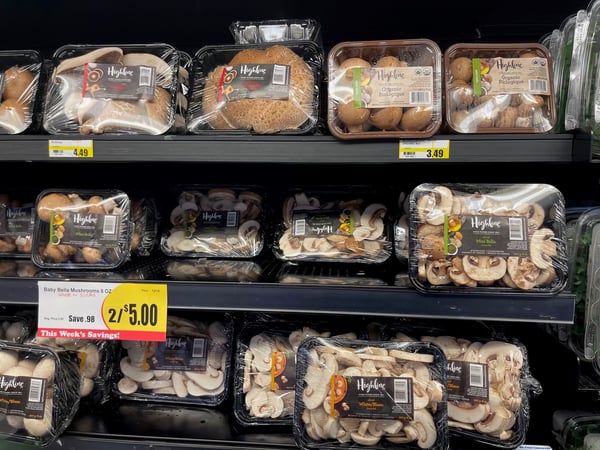
With the plethora of farmers markets all over the country, it is also common to have access to both wild and cultivated mushrooms. There has even been a resurgence and interest in hunting for wild mushrooms, even in the urban environment. With access to such a wide variety of cultivated and wild mushrooms, it certainly seemed fitting to shed a little light on how to handle our shade-loving myceliums.
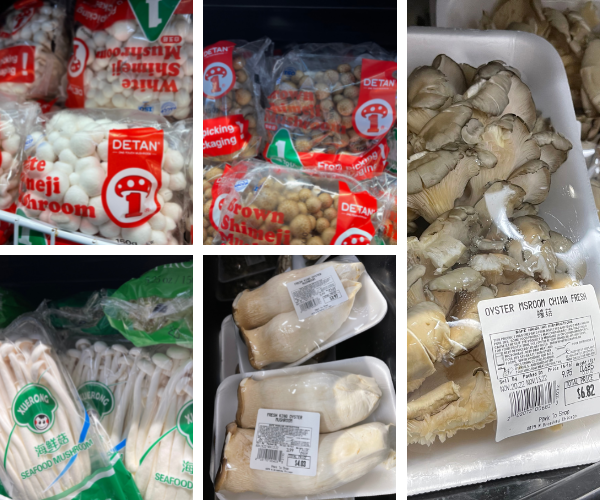 Let’s first start with differentiating between cultivated and wild mushrooms. Wild mushrooms are easy to understand - these are mushrooms harvested in the wild. They might be growing on the side of a tree, at the base of a tree or smack dab in the middle of your driveway or yard. These are unsterile environments that can host leaves, twigs, pine needles, dirt and bugs.
Let’s first start with differentiating between cultivated and wild mushrooms. Wild mushrooms are easy to understand - these are mushrooms harvested in the wild. They might be growing on the side of a tree, at the base of a tree or smack dab in the middle of your driveway or yard. These are unsterile environments that can host leaves, twigs, pine needles, dirt and bugs.
Cultivated mushrooms are grown in sterile environments more like a science laboratory with sterilized compost, white coats and sterile gloves. These are two widely different growing environments and therefore require very different approaches to cleaning. If you find mushrooms in the grocery store, they are cultivated mushrooms. If you forage them yourself, they are wild mushrooms. If you buy them at the farmers market, they could be either, so make sure to ask the vendor.
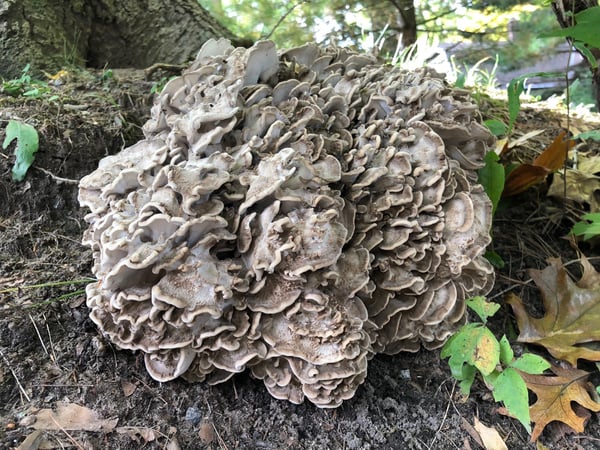
Wild Hen of the Woods Mushroom
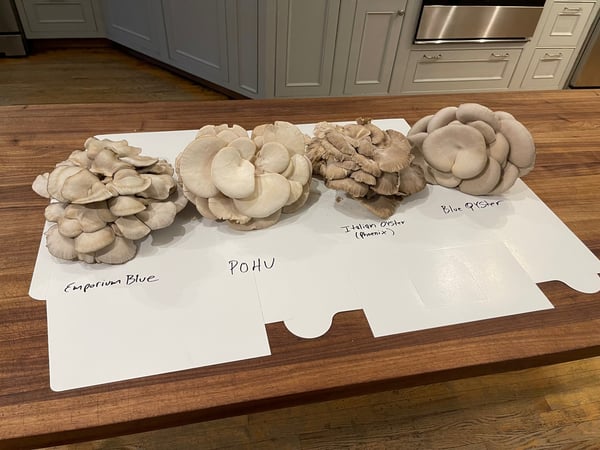
Cultivated Varieties of Oyster Mushrooms
I can’t begin to describe the whole process of safely collecting wild mushrooms so if you happen upon a mushroom growing in your yard and you want to know whether you can clean it up and eat it for dinner, you should really do your research. There are however, a few varieties of mushrooms found in the wild that are relatively easy to identify and safe to eat. You should still do your research but these mushrooms are the easiest to identify in the wild: Morel, Hen of the Woods, Chicken of the Woods and Puffballs. I have written some detailed blogs on how to clean and cook these wild mushrooms including Chicken of the Woods, Hen of the Woods (Maitake), Morel and Puffball Mushrooms. These varieties of mushrooms are each cleaned in a way unique to them, so again, see those blogs for more details.
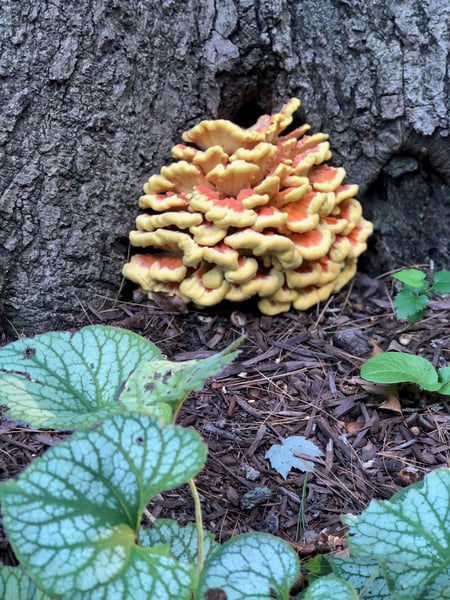
Wild Chicken of the Woods Mushroom
Cultivated mushrooms which are grown in sterile environments are the bulk of the mushrooms that you will encounter. As a rule, cultivated mushrooms do not need to be washed due to the sterile environment and compost they are grown in. All you need to do is brush them off with a dry towel or mushroom brush. There is a subtle difference between the idea that you don’t need to wash cultivated mushrooms and the statement, “You should never wash mushrooms”. I hear many chefs say it’s a big no no to wash mushrooms, and I believe that is a serious overstatement. There are times you shouldn’t wash a mushroom; times is it okay to wash a mushroom and times it is essential to wash a mushroom.
But why would chefs have such a strong reaction to washing mushrooms? Because mushrooms can absorb a lot of water when you wash them, and you don’t want your mushrooms to get soggy. Not all mushrooms absorb the amount of water as others, so there are some subtle differences between mushrooms due to their individual variety and whether they are cultivated or wild.
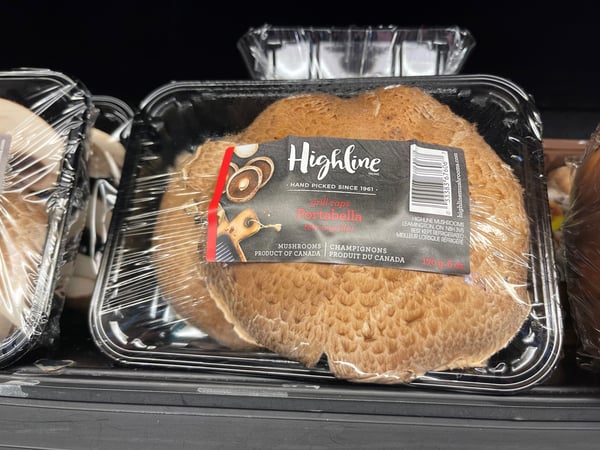
Portabella Mushrooms
When is it not ideal to wash a mushroom?
- When you are going to eat them raw (they get too soggy).
- When the mushroom variety tends to absorb too much water such as:
- Portabella
- Lions Mane
- When the mushroom is cultivated and relatively free of dirt.
When is it helpful to wash a mushroom?
- When the mushroom is starting to deteriorate and may be developing a slime on the outside.
- When you are cleaning a very large number of button or cremini mushrooms.
- When the mushrooms seem exceptionally dirty.
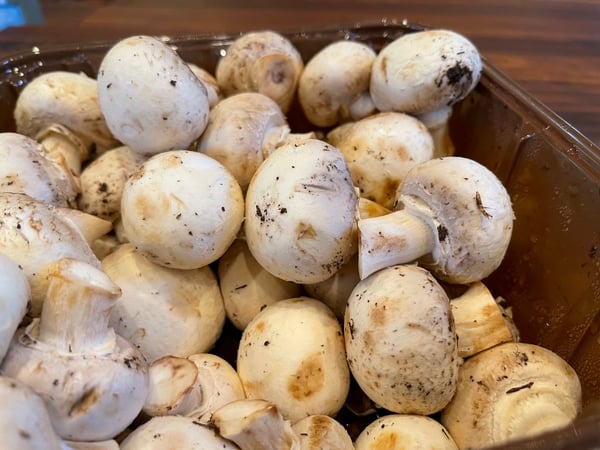
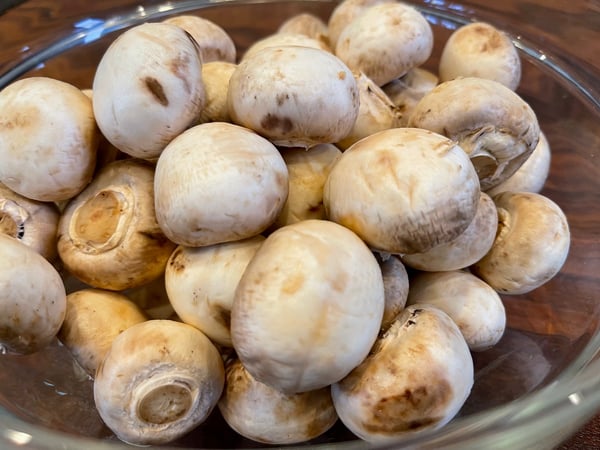
When should you always wash a mushroom?
- Certain wild varieties hold a lot of dirt in their crevices and creases and without a good washing or even soaking, it is almost impossible to clean them such as:
-
- Morel
- Hen of the Woods (Maitake)
- Chicken of the Woods
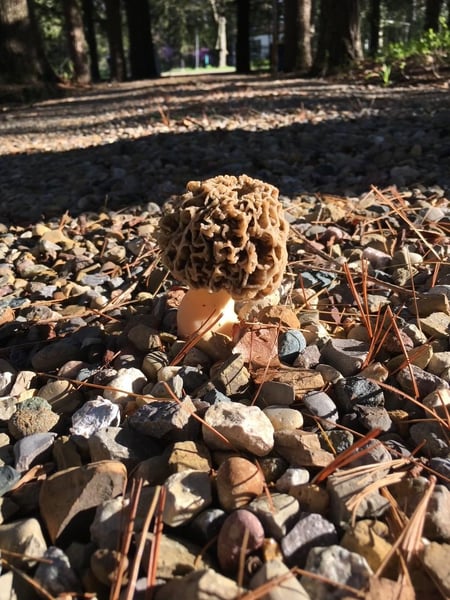
In essence when considering how to clean the mushrooms you just purchased, your first step is to understand whether it is cultivated or wild. Just know, if you purchased it at the grocery store it is cultivated. Second, you are going to look at the mushroom. If the mushroom looks relatively clean, simply brush off the dirt or cut off any section of the mushroom that is holding dirt, generally this is the base or end of the stem of the mushroom. In almost all cases, this is all you need to do.
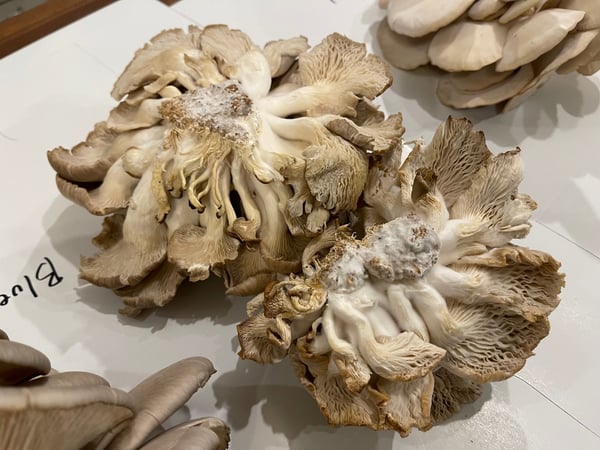
I would like to mention The Chopping Block’s dear friend Josh Almanza and his business, the Frugal Fungi. If you are interested in getting your hands on some truly spectacular varieties of cultivated mushrooms not available at your local grocery store, such as King Trumpets, Blue Oyster, Lions Mane and Italian Oysters to name a few, check out Frugal Fungi’s Facebook page.
Josh Alamanza of the Frugal Fungi
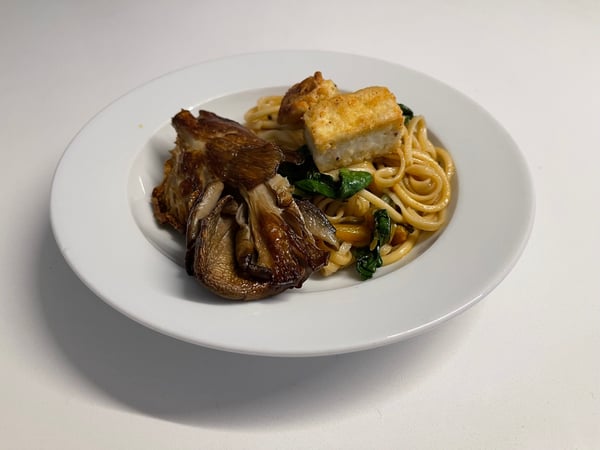
Plated Oyster Mushroom Dish
To learn how to cook mushrooms, turn to our cooking classes. One of my favorite mushroom dishes we teach is the Black Bean and Mushroom Burgers in our virtual class on Friday, February 24 at 6pm CST. You won't miss the meat in this dish at all!
We also cover mushrooms in the Eggs, Vegetable and Grain Cookery day of Culinary Boot Camp. This five-day course will change your cooking forever!

